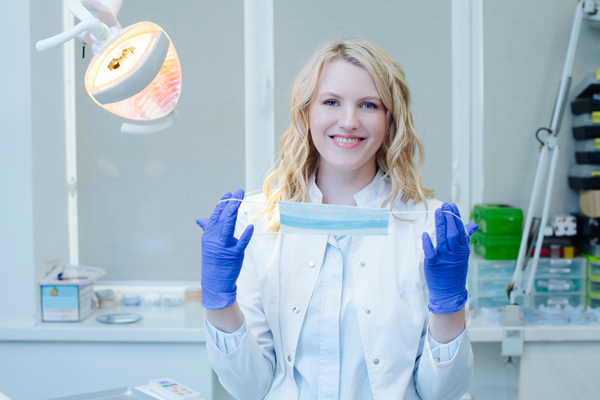How Does In-Office Professional Teeth Whitening Work?

In-office professional teeth whitening is a great way to improve the appearance of your smile and gain more confidence. This review offers insights into how in-office professional teeth whitening works, including a step-by-step guide to the process many general dentists use.
A review of the professional teeth whitening process
Every dentist has their own profess for professional teeth whitening. However, there are common steps that you can expect before your visit. Most notably, professional teeth whitening often involves the use of a teeth shade, discussing treatment goals, isolating the dental enamel, applying the bleaching agent and polishing teeth.
Teeth shade and treatment goals
The first step in the professional teeth whitening process is determining the shade of teeth and establishing realistic expectations for how much teeth can improve through treatment. This helps the patient to mentally prepare and have an understanding of what they can expect. Most patients are surprised by how much their teeth shade improve, however. If the dentist cannot improve the shade of teeth to the desired level of the patient, then they may recommend other treatment options such as dental veneers instead of professional teeth whitening.
Isolating the gums and teeth
The bleaching agent used in professional teeth whitening (see below) may cause some gum irritation. To prevent this and to ensure the gums are not damaged or affected in any way during treatment, the dentist isolates the gums from the visible surface of teeth. This also ensures the dental team can reach all areas of teeth during treatment so that there are no stains left while the person smiles.
Applying the bleaching agent
Most general and cosmetic dentists use either hydrogen peroxide and carbamide peroxide during professional teeth whitening. The bleaching agent target ts the stains and improve s the shade of teeth. The dentist leaves the bleaching agent on for up to half an hour before washing it away. If necessary, the dentist can reapply the bleaching solution until the desired results are achieved. The bleaching agent is safe and should not damage teeth in any way. While there may be some slight sensitivity following treatment, it typically is not severe and goes away relatively soon (within a couple of hours).
Teeth polishing with pumice
Not all patients may require teeth polishing after professional teeth whitening. However, some dentists recommend teeth polishing with a material known as pumice. This makes teeth much smoother, which helps patients keep their teeth clean and prevent a buildup of plaque and tartar that could lead to teeth stains. Teeth polishing is a non-invasive procedure and should not cause much, if any, discomfort during or after the procedure.
Contact our dental team for more information
Get in touch with us by phone or email today to arrange a visit for professional teeth whitening. We believe that every one of our patients should have a beautiful and white smile that they feel confident showing off in public, and we take great joy in seeing our patients achieve their desired results.
Request an appointment here: https://www.yourperfectsmiledentistry.com or call Your Perfect Smile Cosmetic & Family Dentistry at (281) 305-9549 for an appointment in our Kemah office.
Check out what others are saying about our dental services on Yelp: Professional Teeth Whitening in Kemah, TX.
Related Posts
A TMJ Dentist is a dental professional who helps diagnose and treat problems with the temporomandibular joint (TMJ), which connects the jaw to the skull. Issues with this joint can cause pain, stiffness, and discomfort in the jaw. They can also lead to headaches, earaches, and trouble chewing. Visiting a TMJ dentist is an important…
Laser dentistry is changing the way some dentists perform common dental procedures. This advanced dental technology utilizes special dental lasers instead of more traditional dental instruments. In addition to crown lengthening and gum disease treatment, dental lasers can also be tools for root canal procedures.A root canal is necessary when a dental patient experiences an…
Adult sedation dentistry is the modern way to deal with the pain or stress that patients may experience when visiting the dentist. While we do everything in our power to limit or eliminate pain, some patients will still feel a bit of fear toward any type of dental appointment. Fortunately, we have different types of…
Botox® is a household term by now, known as one of the most common ways of treating facial wrinkles. Fewer people are aware, however, that Botox® is used in cosmetic — or “esthetic” — dentistry treatments.This article will examine how Botox® is used as an esthetic dentistry treatment, first defining esthetic dentistry before diving into…


